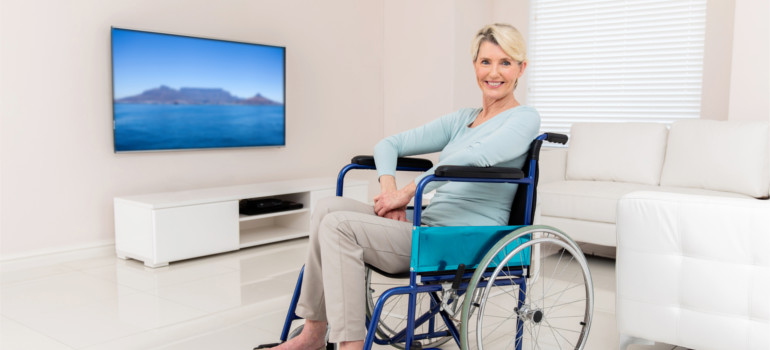According to the CDC, approximately 38.2 million adults in the United States face difficulties with physical functioning. Although millions of Americans suffer from disabilities, many fail to find traditional housing that meets their needs.
Since apartments are rarely wheelchair and handicap accessible, the disabled and elderly are often an untapped market. For landlords looking to lower vacancy rates, converting an existing apartment to accommodate the handicapped can drive in new tenants and reduce tenant turnover. Making the following modifications to your apartment will help attract potential tenants while ensuring your apartment is accessible.
According to the AIHW, there is more than 4 million Australians living with a disability, the around 18% of the population. While there’s millions of people living with a disability, there is a severe lack of suitable accommodation for them.
However, there is the National Disability Insurance Scheme or NDIS available to help those looking for suitable housing. NDIS Cairns service providers can assist the disable look for housing that meets their needs. Whether that’s full-time care or properties with accessibility ramps, handrails, handheld showers or wider doors.
Since apartments are rarely accessible, the disabled and elderly are often excluded from apartment living. For landlords looking to lower vacancy rates, converting an existing apartment to accommodate the handicapped can drive in new tenants and reduce tenant turnover. Making the following modifications to your apartment will help attract potential tenants while ensuring your apartment is accessible.
Install an accessible tub
Individuals who struggle with physical functioning often find it challenging to bathe or shower. For residents who are wheelchair-bound, lowering themselves into a tub or standing for a long period of time can also create difficulties. As a result, landlords who want to make accessible apartments should invest in accessible tubs or shower units.
Accessible tubs are tall, deep bathtubs with doors on the side that reveal a seat. These tubs make it easy for handicapped and wheelchair-bound tenants to bathe and shower, as they can simply sit on the seat to avoid standing. In addition, the tenants do not have to climb over a high tub wall or risk slipping on a shower floor. Specialized accessible tubs can be installed by professional handicap bathroom contractors in any existing tub or shower.
Install a personal alarm system
If you are interested in attracting elderly and disabled tenants, then you should consider installing personal alarm systems inside each accessible apartment. Personal alarm systems are electronic devices that tenants can carry around.
When activated, the system can be used to call for help. Personal alarm systems can be used when a tenant is sick, hurt, or injured and is unable to reach the phone. Providing a personal alarm system will make your apartment more attractive to potential tenants.
Update old sinks and faucets
Tenants who lack full mobility in their hands, arms, or upper body often find it difficult to effectively grip faucets. Faucets in accessible apartments should be switched out for single lever style faucets. To turn on single lever faucets, tenants can raise up and push down the lever. To change the temperature, the lever can be turned left or right.
Low vanity cabinets also make it difficult for wheelchair-bound residents to access sinks. Since wheelchair-bound residents might find it challenging to move close enough to use the sink, installing pedestal sinks or wall-mounted sinks can help remove the obstacle.
Invest in wheelchair ramps
Accessible apartments are most often associated with wheelchair ramps. Entrances to the apartment complex and the apartment itself should have a wheelchair ramp in addition to stairs. Landlords also have the option of eliminating the stairs entirely and replacing them with a wheelchair ramp.
Wheelchair ramps can be made of wood, aluminum, or poured concrete. Before installing a wheelchair ramp, check local building codes for ramp angle specifications to ensure that your ramp will be compliant.
Make sure doorways are wide enough
In order to accommodate wheelchair-bound residents, doorways must be wide enough to fit a standard wheelchair. The width of both entrance and interior doorways should be at least 32 inches wide.
In addition, you should consider updating the building’s door system. Installing a hinge system to replace swing-away style doors will allow doors to open even wider, which allows wheelchairs to pass through the doorway without hitting the door.
After making the necessary modifications to your apartment, you can use websites like turbotenant.com for help posting and managing your property. In areas with a shortage of accessible apartments, landlords can attract new tenants and reduce vacancy rates by making these modifications to their apartments.
Join the discussion on this topic with Code Star Live visiting our contact page.
